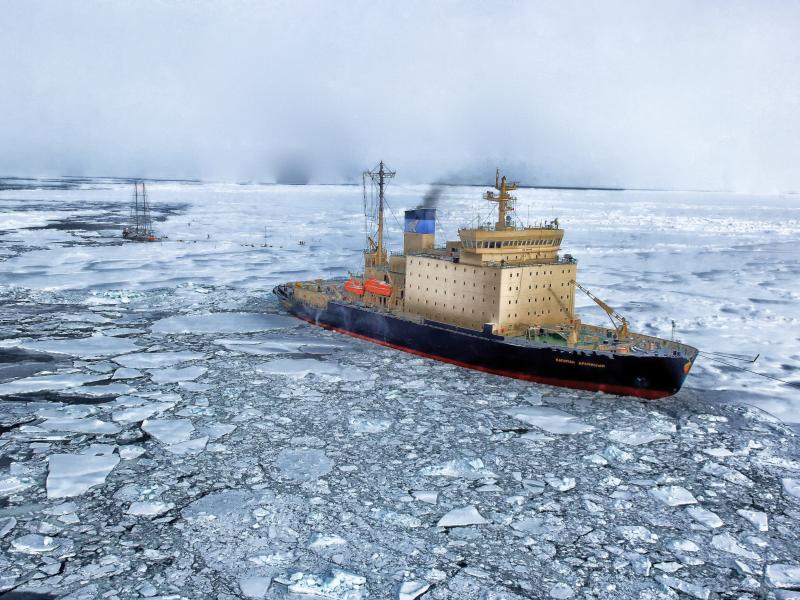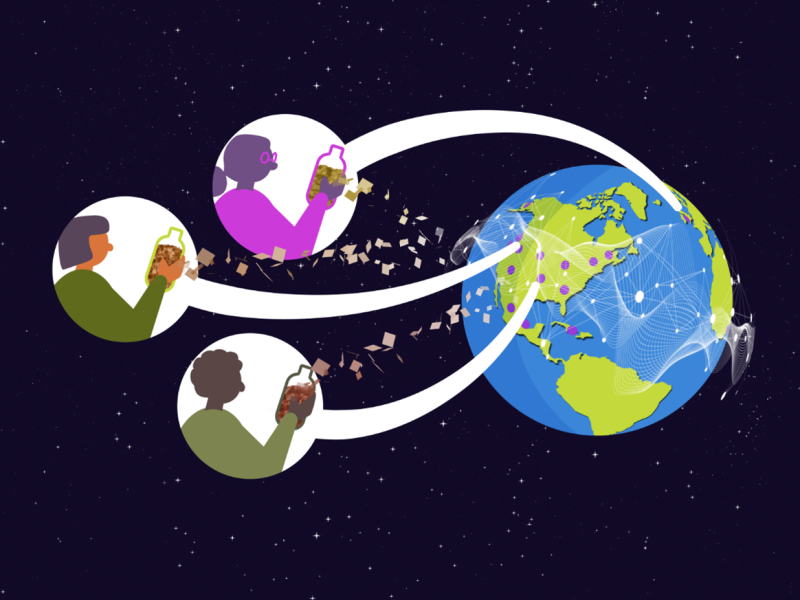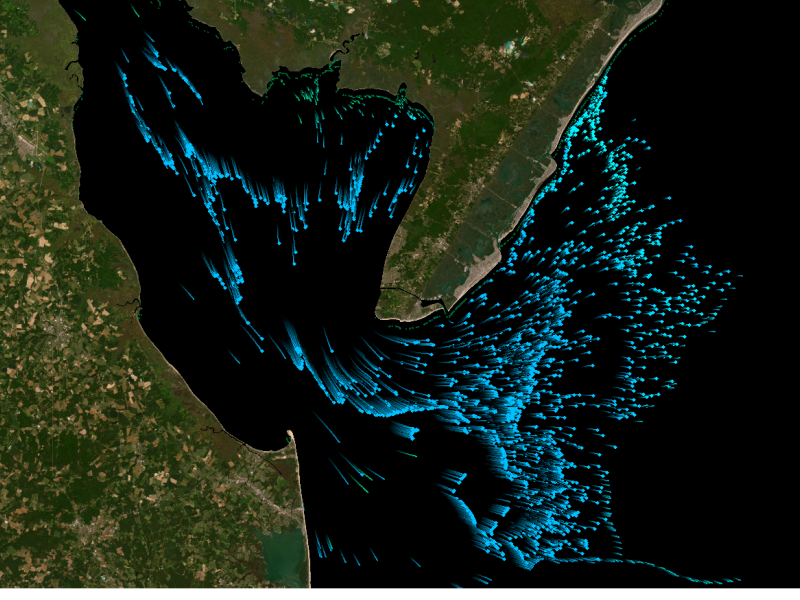
Modeling Earth Systems
Modeling Earth Systems
Understanding and projecting Earth
system changes at a range of scales
Understanding and projecting Earth
system changes at a range of scales
Understanding long-term trends in regional and global processes, ranging from storm patterns to changes in water temperatures to large-scale atmosphere and ocean circulation, requires accurately modeling the different Earth system components at various scales. Earth system models aim to capture regional and global phenomena that are reflected in multiple aspects of the Earth system—the atmospheric, land/river, ocean, cryospheric, and biological and biogeochemical systems.
These models often require significant amounts of computing power to run simulations of the past or project the future. Global Earth system models can represent and provide insight to large-scale processes at scales of 100 km or greater, known as coarse resolution.
Regional scale models focus on smaller areas, like the central United States, and provide greater, or finer, resolution. This is particularly important for modeling weather patterns and extreme events. Regional scale models can incorporate multiple Earth system components or focus more specifically on individual Earth system components, such as atmosphere or land.
Regional and global Earth system models are composed of simplified representations of complex processes, or parameterizations, often developed for smaller-scale processes, such as clouds, turbulence, and runoff generation. To gain a better understanding of smaller-scale atmospheric processes and improve their parameterizations in Earth system models, highly detailed large eddy simulations (LESs) are used to simulate turbulent airflow in the atmosphere at resolutions of tens to hundreds of meters.
Why Modeling Earth Systems Matters
Researchers use Earth system models to project changes to the future Earth system under a wide range of scenarios. This is particularly critical for climate science to explore the broad consequences of increased greenhouse gases and other changes due to human activities. Models enable scientists to test hypotheses, project multiple potential pathways for the Earth system, and determine their likely impacts.
Models can also simulate the past climate. This serves two primary purposes: to validate a model’s accuracy by reproducing known outcomes and to identify potential causes of past changes. Researchers can alter environmental factors, such as greenhouse gas concentrations and land type/usage, to determine which are key contributors to the resulting outcome. This helps scientists untangle the complex interactions that control large-scale phenomena.
Modeling Earth Systems at Pacific Northwest National Laboratory
Pacific Northwest National Laboratory (PNNL) continues to have an important role in developing and applying models of various Earth system components. These models, several of which focus specifically on the atmosphere, enable PNNL scientists to study the Earth system at global, regional, and local scales.
PNNL researchers have made substantial contributions to multiple aspects of the U.S. Department of Energy’s (DOE’s) Energy Exascale Earth System Model (E3SM). E3SM is an Earth system model with a focus on processes relevant to the energy sector. This large, multi-institutional project, supported by DOE, aims to “address the grand challenge of actionable projections of Earth system variability and change.” PNNL researchers have spearheaded efforts, including those aimed at integrating the biogeochemical cycle into E3SM, improving cloud and aerosol representations, and representing human systems, and play major roles in E3SM development.
E3SM couples multiple models, each focusing on a single component of the Earth system. Among them, the E3SM atmosphere model (EAM), the E3SM land model (ELM), and the Model for Scale Adaptive River Transport (MOSART) all feature contributions from PNNL researchers. Subdividing the Earth system into individual model components allows experts in specific fields like atmospheric science or watershed science to develop the components separately and apply advances in individual system modeling.
While Earth system models work at large scales, their coarse resolution limits their utility to model regional or smaller-scale processes. Researchers use regional models to examine Earth system processes in specific regions of interest. PNNL researchers possess expertise developing and using the Weather Research and Forecasting Model (WRF) to study atmospheric processes, such as aerosols, clouds, and precipitation; aerosol-cloud interactions; and land-atmosphere interactions. WRF has several variants, including WRF-Chem, which couples WRF with treatments of trace gas and aerosol chemistry; WRF-Hydro, which couples meteorology with water processes on the ground; and WRF-LES, which uses LESs to simulate detailed turbulence and cloud processes for specific applications. PNNL researchers have used WRF for projects as diverse as understanding what influences shallow clouds, exploring how irrigation impacts water cycling over the continental United States, identifying the sources of extremely small particles above the Amazon rainforest, studying inflow to wind plants, modeling convection and its large-scale environment, and understanding the hydrologic impact of atmospheric rivers.
LESs simulate atmospheric processes with the greatest spatial detail, with resolutions below 100 meters. LESs are used to simulate the small features of the atmosphere, like air bubbles, that form clouds and are related to atmospheric turbulence. PNNL researchers continue to play critical roles in the DOE-supported Large-Eddy Simulation Atmospheric Radiation Measurement Symbiotic Simulation and Observation (LASSO) project and the Predicting Interactions of Aerosol and Clouds in Large Eddy Simulations (PINACLES) model. This work helps provide representations of the atmosphere near a significant measurement site in the U.S. southern Great Plains, as well as in Argentina.




